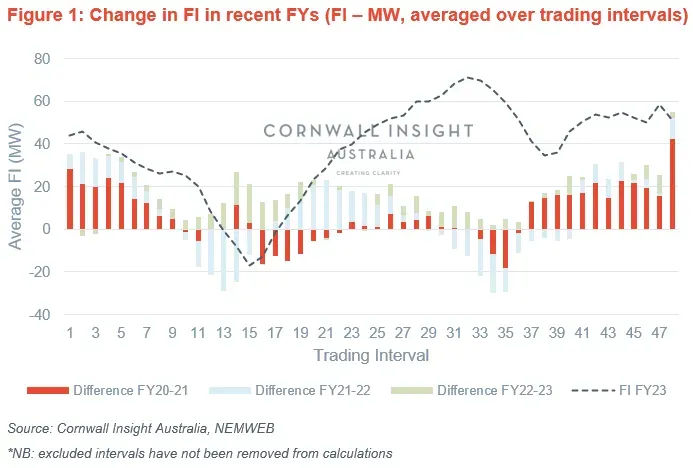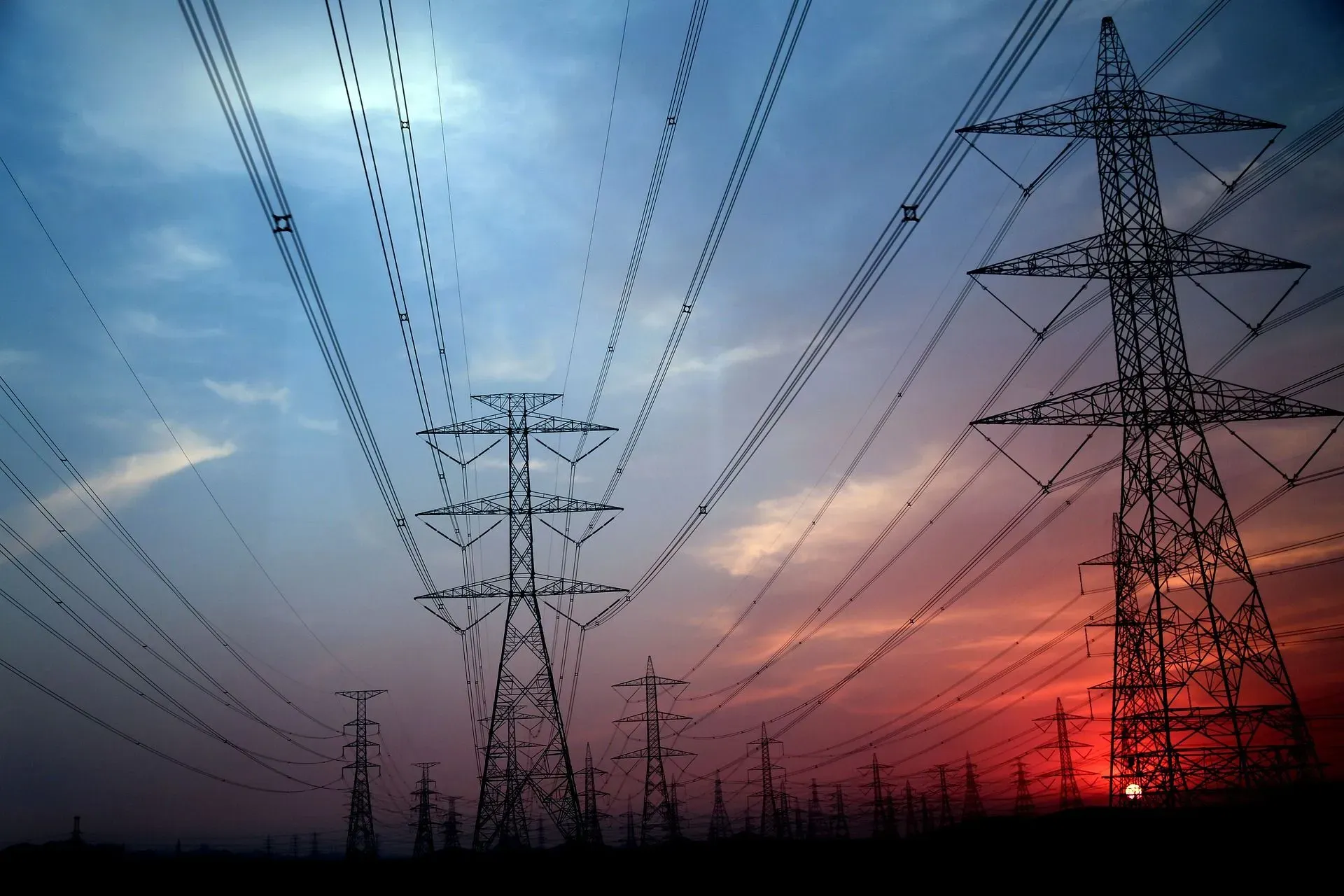Although not quite as thrilling for some as the search for the Holy Grail, finding a way to minimise causer pays costs continues to take the focus of both wind and solar farms. Using the FI value through self-forecast systems[1] has become increasingly prevalent for these assets in an effort to reduce the FCAS penalties associated with Causer Pays (costs are recovered from generators when they deviate from their expected 5-minute linear forecast when that deviation is opposite to the total system energy balance requirement – i.e. a generator is under target but the system needs more energy or the generator is over target and the system has excess energy).
The Frequency Indicator is a parameter that indicates the extent to which more generation (in which case it is positive) or less generation (negative) is required to keep the frequency at 50 Hz. Historically there has been a positive bias in the Frequency Indicator (FI), which led to these forecast systems regularly gaining traction from 2016 (largely by wind farms) to date and given VRE has paid a large portion of causer pays relative to per size, the wind industry pushed to create their own forecasts to lower the effect. Over time many figured that the more those under-forecasted, the more the system would catch up and the less the bias would appear.
This Chart of the week looks at how this FI value has changed over recent financial years and the growth in FI bias seen.

From the chart, some generation observations can be made:
- The FI bias is still growing, with an average trading interval growth of 4.5MW. This will likely lead to further costs upon VRE generators without forecasting systems, given thermal MPFs are regularly hitting 0.
- Note that the FI bias was +25 in FY2019 and now sits at +38 in FY2023.
- Frequency correction requirements in the NEM are becoming more necessary overnight (which suggests that self-forecasting wind could potentially increase any under-forecast bias to lower potential causer pays cost and potentially reduce the positive FI).
- Even with potential under-forecasting bias (which we would expect on average to have the effect of reducing the FI), we are still seeing the FI increase.
- There appears to be a correlation between more renewable energy entering the market and increasing FI, i.e. more regulation services required.
- The morning solar ramping hours are the most volatile. Is solar ramping too quickly?
With the FI bias not just remaining despite the popular growth of these systems but actually growing, it appears that given so much VRE has continued to enter the system, under-forecasting is still a valid tactic for those within the industry. And although past performance is not a reliable indicator of the future, there will only be more and more VRE entering the system, likely leading to the FI value growing.
Given the FI has seen growth across nearly all periods in FY23, it may be worth deep diving further in the future into the update to the AWEFs/ASEFs dispatch forecasts model, which saw change in November 2022, and how this change influenced off-target models and VRE generator target error. Since when the FI is positive, it typically means there is a power deficit, this target error should have theoretically lessened necessary regulation recuperation, given a reduced dispatched error was the expected result. However, this may be too early to tell, given the continued increase in VRE across the NEM.
Given that forecast accuracy markets and PFR payments are being explored in the short term, there is a chance that self-forecasting or advantageable forecasting will become temporary. For those looking to stay on top of relevant rule changes in the future, Cornwall Insight Australia releases Energy Market Alerts. These alerts deliver insights into major regulatory, policy and market developments, including rule changes and market reform workstreams from the government, regulators, market operators, and rule-makers. Please contact us at enquiries@cornwall-insight.com.au for a free sample and introductory pricing we have available. Unfortunately, we do not take payments through shrubberies.
For further understanding for those wishing to save on causer pay costs, the forecasting technique used periodically under forecasts (or over forecasts – a rarity) a plant’s output based on this bias (see Table 1 for outcome examples) to hopefully return a positive RNEF score. Noting that APF = RNEF + LNEF, it was deemed that if a self-forecast consistently under forecasts the generation asset, then RNEF will be larger in magnitude than LNEF (due to the positive FI bias) and result in a positive score to MPF. The final result of this positive MPF would cancel out the MPF applied to semi-scheduled generators in the NEM for the recuperation of regulation FCAS services.
Table 1: FI bias table outcomes
| FI | 5-minute performance factor | Underforecast performance | Overforecast performance |
|---|---|---|---|
| Positive | RNEF | Positive | Negative |
| Negative | LNEF | Negative | Positive |
[1] Where a generator uses its own forecast for expected generation rather than AEMO’s forecasting system









